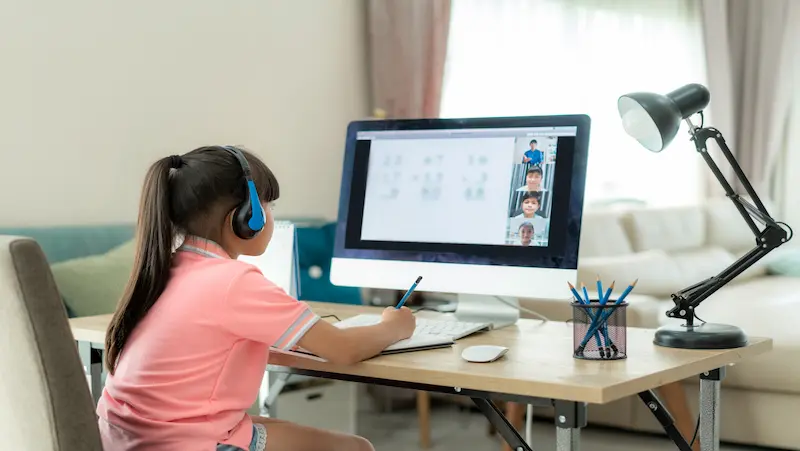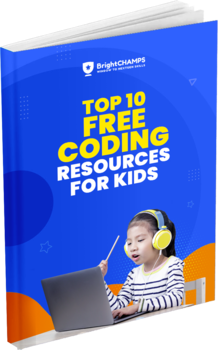In today’s digital age, technology has transformed the way children learn. Educational apps have emerged as powerful tools that engage and empower young minds. These apps offer interactive and engaging content that enhances children’s learning experiences. In this article, we will delve into the world of kids learning apps and discover their impact on education.
Table of contents
- Introduction to Kids Learning Apps
- Benefits of Kids Learning Apps
- Types of Kids Learning Apps
- Top Kids Learning Apps by Age Group
- Learning Apps for Different Learning Styles
- Parental Involvement in Kids’ Learning Apps
- Features of High-Quality Kids Learning Apps
- Kids Learning Apps for Special Needs
- Multilingual Learning Apps for Language Development
- Offline Learning Apps: Learning Beyond the Screen
- Exploring the Future of Kids Learning Apps
- Conclusion
- Frequently Asked Questions
Introduction to Kids Learning Apps
Educational apps cleverly blend play and learning, making the educational journey enjoyable for children. Through interactive activities, games, and lessons, kids develop essential skills while having fun. The article will explore how the fusion of play and learning in these apps positively impacts children’s cognitive development and creativity.
Benefits of Kids Learning Apps
Kids learning apps have become a valuable resource in modern education, transforming the way children learn and interact with educational content. These apps offer a wide range of benefits that contribute to the overall growth and development of young minds. Let’s explore the top five advantages of kids learning apps:
1. Interactive Learning: Engaging Lessons and Activities
One of the most significant advantages of kids learning apps is their interactivity. Unlike traditional educational materials, these apps offer immersive and hands-on learning experiences. Through interactive lessons, quizzes, and activities, children actively participate in the learning process. This active engagement stimulates their curiosity, critical thinking, and problem-solving skills. By having fun while learning, children develop a positive attitude towards education, making them more receptive to new knowledge.
Kids learning apps offer a valuable opportunity for young minds to grow, but ensuring their online safety is paramount. Discover essential online safety tips for kids while using these educational apps.

2. Personalized Learning: Tailoring Education to Individual Needs
Every child has a unique learning style and pace of comprehension. Kids learning apps recognize this diversity and offer personalized learning paths. With adaptive algorithms and progress tracking, these apps can assess a child’s strengths and weaknesses. Based on the assessment, the apps adjust the content and difficulty level to suit the child’s individual needs. This personalized approach ensures that each child receives targeted support and challenges, enhancing their overall learning outcomes.
3. Gamified Learning: Fun and Motivating Educational Games
Gamification has revolutionized the learning experience by incorporating elements of play and competition into educational content. Kids learning apps use gamification to make learning enjoyable and motivating. By earning rewards, completing challenges, and achieving milestones, children stay motivated to progress and excel. Gamified learning also instills a sense of accomplishment, boosting their self-esteem and confidence. As a result, children become more enthusiastic about learning and develop a lifelong love for knowledge.
Digital art activities within kids learning apps engage young minds, fostering creativity and enhancing artistic skills in an interactive and engaging way.
4. Multisensory Learning: Engaging Multiple Learning Styles
Children have different learning styles, such as visual, auditory, and kinesthetic. Kids learning apps cater to these diverse preferences by offering multisensory content. Visual learners benefit from captivating graphics and videos, while auditory learners excel with audio instructions and narrations. Kinesthetic learners engage with interactive elements that encourage hands-on exploration. By providing content that appeals to various senses, these apps ensure that every child can learn effectively and efficiently.
5. Accessible and Convenient Learning: Anytime, Anywhere
Kids learning apps break down barriers to education, making learning accessible and convenient for children worldwide. With the proliferation of smartphones and tablets, children can access educational content anytime, anywhere. This accessibility is particularly beneficial for children in remote areas or those with limited access to traditional learning resources. Moreover, kids learning apps offer flexibility in scheduling, allowing children to learn at their own pace and accommodating busy schedules.
Types of Kids Learning Apps
1) Educational Apps by Subject: Exploring Diverse Learning Areas
Kids learning apps cover a wide range of subjects, catering to various learning interests. This section will introduce readers to diverse educational apps, from mathematics to history, and highlight their significance in supporting well-rounded development.
2) Language and Literacy Apps: Enhancing Reading and Language Skills
Language and literacy apps play a crucial role in children’s language development. These apps promote vocabulary expansion, reading comprehension, and language fluency. The article will review some top language and literacy apps available for children.
3) Math and Science Apps: Encouraging Logical Thinking and Exploration
Math and science apps provide interactive platforms for children to explore mathematical concepts and scientific phenomena. This section will showcase the best apps that stimulate logical thinking, problem-solving abilities, and a passion for science.

Top Kids Learning Apps by Age Group
1) Preschool Learning Apps: Nurturing Early Development
Preschool learning apps focus on foundational skills and early development. The article will recommend age-appropriate apps that foster cognitive, motor, and social development in young children.
2) Elementary School Learning Apps: Expanding Knowledge and Skills
Elementary school learning apps cater to various subjects, allowing children to expand their knowledge and skills. This section will explore apps that align with elementary school curricula and encourage children’s academic growth.
3) Middle School Learning Apps: Preparing for Academic Challenges
Middle school learning apps bridge the gap between primary and secondary education. They offer more complex concepts and challenges to prepare students for higher academic standards. The article will recommend apps that support pre-teens during this critical phase of learning.
Learning Apps for Different Learning Styles
1) Visual Learners: Apps with Engaging Graphics and Videos
Visual learners absorb information better through images and videos. This section will introduce apps with captivating graphics and videos that cater to the needs of visual learners.
2) Auditory Learners: Apps with Audio and Verbal Instructions
Auditory learners excel when provided with audio and verbal instructions. The article will suggest apps that use narration and spoken instructions to optimize the learning experience for auditory learners.
3) Kinesthetic Learners: Apps with Hands-On and Interactive Features
Kinesthetic learners thrive in hands-on and interactive environments. This section will showcase apps that offer physical engagement and encourage kinesthetic learning.
Parental Involvement in Kids’ Learning Apps
As kids increasingly engage with learning apps, parental involvement becomes crucial to ensuring a safe and enriching digital learning experience. Parents play a significant role in guiding their children’s use of educational technology. Here are the top four aspects of parental involvement in kids’ learning apps:
1. Choosing Appropriate Apps: Assessing Content and Suitability
With a vast array of kids’ learning apps available, it’s essential for parents to choose apps that align with their child’s age, interests, and educational needs. Assessing the app’s content, including lessons, activities, and interactive elements, is vital to ensure that it offers valuable educational content.
Parents should look for apps that are age-appropriate, promote positive values, and align with their child’s current learning goals. Additionally, reading reviews and seeking recommendations from other parents or educators can aid in making informed decisions about the best apps for their child.

2. Setting Screen Time Limits: Balancing Learning and Play
While kids learning apps provide valuable educational content, excessive screen time can have adverse effects on children’s development and well-being. It’s essential for parents to set appropriate screen time limits to strike a balance between learning and other activities.
Creating a daily or weekly schedule that allocates specific times for using learning apps and other screen-based activities helps establish healthy tech habits. Encouraging children to engage in other activities, such as physical play, reading books, or spending time outdoors, ensures a holistic approach to their overall development.
3. Monitoring App Usage and Progress
Active monitoring of a child’s app usage and progress is key to understanding their learning journey and identifying areas of improvement. Many learning apps offer progress tracking features that allow parents to view their child’s performance and achievements.
By regularly reviewing this information, parents can identify their child’s strengths and weaknesses and provide targeted support when needed. Monitoring app usage also helps parents ensure that their child is using the app responsibly and staying focused on educational content.
4. Engaging in Learning Together: Quality Family Time
Parents can enhance their child’s learning experience by actively participating in the learning process. Engaging in learning activities together not only strengthens the parent-child bond but also provides opportunities for shared learning and exploration.
Discussing the content, asking questions, and encouraging open discussions about what the child has learned fosters a deeper understanding of the material and promotes critical thinking skills. Moreover, parents can use these moments to reinforce positive values, instill curiosity, and nurture a love for learning in their child.
Features of High-Quality Kids Learning Apps
High-quality kids learning apps are designed to provide a safe, engaging, and effective educational experience for young learners. These apps incorporate various features that contribute to children’s cognitive development and academic progress. Here are the top four features of high-quality kids learning apps:
1. Age-Appropriate Content: Aligning with Developmental Milestones
One of the most critical features of a high-quality kids learning app is its ability to offer age-appropriate content. These apps are designed with a deep understanding of emotional, social, cognitive development in children and at different ages. Content is carefully curated to suit the learning needs and interests of specific age groups.
For example, apps for preschoolers focus on foundational skills like colors, shapes, and basic phonics, while apps for older children offer more complex concepts relevant to their grade level. Aligning with developmental milestones ensures that children are presented with content that is challenging yet achievable, fostering a sense of accomplishment and promoting a positive learning experience.

2. Interactive and Engaging Activities
High-quality kids learning apps feature interactive and engaging activities that encourage active participation. Through games, quizzes, puzzles, and hands-on tasks, children can explore and apply the knowledge they acquire.
Interactive elements stimulate children’s curiosity, critical thinking, and problem-solving skills, making the learning process more enjoyable and effective. These apps also offer feedback and rewards to reinforce positive behavior and motivate children to continue learning.
3. Progress Tracking and Reporting: Monitoring Educational Growth
An essential feature of high-quality kids learning apps is the ability to track a child’s progress and generate comprehensive reports. These apps use data analytics to assess a child’s performance, learning patterns, and areas of improvement. Parents and educators can access detailed reports to monitor a child’s educational growth and identify strengths and weaknesses.
This data-driven approach allows for targeted interventions and personalized support, helping children reach their full potential. Progress tracking and reporting empower parents and educators to actively engage in a child’s learning journey and support their academic success.
4. Safe and Ad-Free Environment
High-quality kids learning apps prioritize children’s safety and well-being by providing a secure and ad-free environment. These apps adhere to strict privacy and safety guidelines to protect children from inappropriate content and ensure their data is handled responsibly.
By creating a safe space for learning, kids can explore educational content without exposure to harmful advertisements or distractions. A distraction-free environment allows children to focus better and make the most of their learning experiences.
Kids Learning Apps for Special Needs
1) Apps for Kids with Learning Disabilities: Providing Support
Kids learning apps can be instrumental in supporting children with learning disabilities. This section will explore apps specially designed to cater to the needs of children with diverse learning challenges.
2) Inclusive Educational Apps: Catering to Diverse Learning Styles
Inclusivity in education is crucial for ensuring that every child can access quality learning experiences. This section will showcase apps that embrace diverse learning styles and provide equal learning opportunities for all.
Multilingual Learning Apps for Language Development
1) Language Learning Apps: Exploring the World of Multilingualism
Multilingual learning apps open doors to cultural understanding and global communication. This section will introduce language learning apps that allow children to explore the world of multilingualism.
2) Cultural Learning Apps: Embracing Diversity through Language
Cultural learning apps celebrate diversity and foster cultural appreciation. The article will showcase apps that introduce children to various cultures, languages, and traditions.

Offline Learning Apps: Learning Beyond the Screen
Learning shouldn’t be limited to screens. This section will recommend apps that encourage outdoor exploration through educational games and activities, promoting a holistic approach to learning.
Printable learning resources complement digital apps and promote hands-on learning experiences. This section will offer suggestions for printable resources that reinforce concepts learned through apps.
Exploring the Future of Kids Learning Apps
1) Artificial Intelligence in Learning Apps: Personalized Education
The future of kids learning apps is exciting with the integration of artificial intelligence. This section will discuss how AI can further personalize education and cater to each child’s unique learning needs.
2) Virtual Reality and Augmented Reality: Immersive Learning Experiences
Virtual reality (VR) and augmented reality (AR) are transforming learning by providing immersive experiences. This section will explore the potential of VR and AR in enhancing children’s learning journeys.
Conclusion
In conclusion, kids learning apps have revolutionized education by making learning engaging, personalized, and accessible. These apps empower young minds, preparing them for a bright and knowledgeable future.
Embracing technology in education is essential to keep pace with the ever-evolving world and cultivate a passion for lifelong learning in children. Let us celebrate the magic of learning through these enchanting apps and embark on a journey of exploration, growth, and discovery.
Prepare your kids for the future with Brightchamps‘ innovative courses. Robotics, coding, and financial education come together to create an engaging and educational journey.
Frequently Asked Questions
Kids learning apps can be safe for independent use, but parental supervision is essential, especially for younger children, to ensure a secure and appropriate learning experience.
To ensure privacy and security, choose reputable apps with strict privacy policies. Monitor app permissions, enable parental controls, and limit data sharing.
Kids learning apps can be effective, providing interactive, personalized learning experiences, but a balanced approach with traditional teaching methods enhances learning outcomes.
Kids learning apps can complement formal education but cannot replace the comprehensive learning experience offered by schools, teachers, and social interactions.
Both free and subscription-based kids learning apps are available. Free apps may offer limited features, while subscriptions unlock premium content and additional benefits.


 We are an army of educators and passionate learners from BrightChamps family, committed to providing free learning resources to kids, parents & students.
We are an army of educators and passionate learners from BrightChamps family, committed to providing free learning resources to kids, parents & students.







